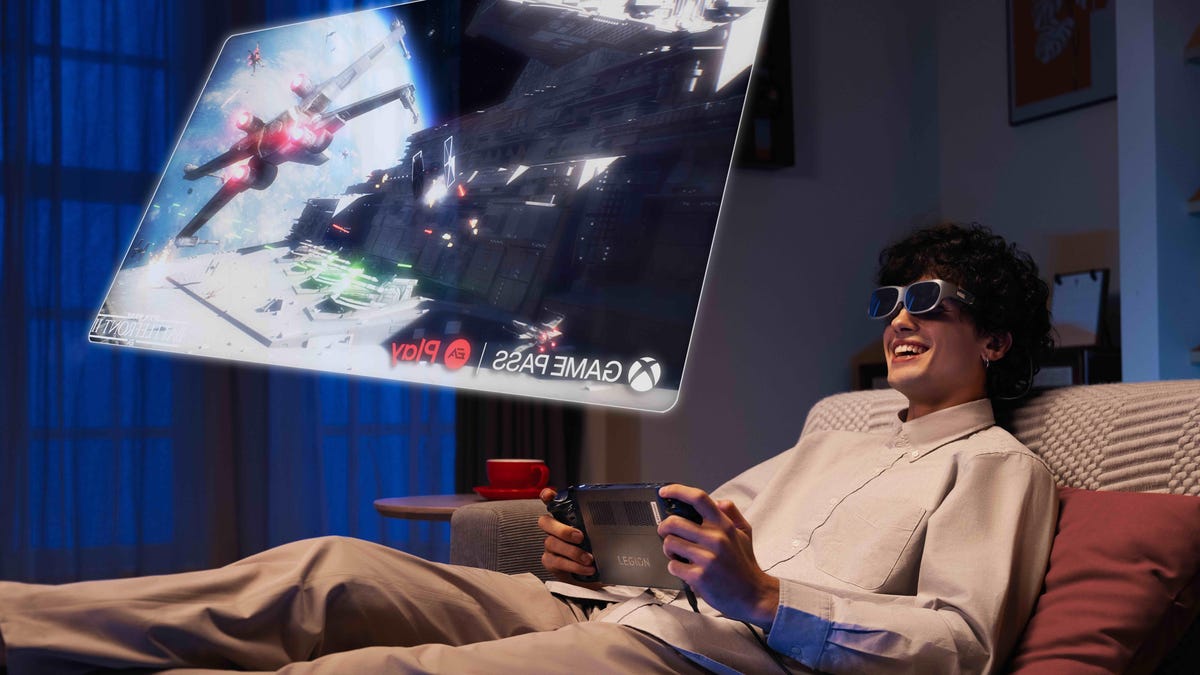Lenovo's Micro-OLED Legion Glasses Are Wearable Gaming Displays
Smart glasses for your gaming handheld.

The Lenovo Legion Glasses are $329 displays on your face.
Nobody really owns smart glasses in everyday life, and the dream of true AR glasses is still being worked out. But in the meantime, could gaming glasses be a thing? Lenovo thinks so.
The newly announced Legion Glasses, arriving in October for $329, are primarily accessories for Lenovo's newly-announced Legion Go Windows gaming handheld, but they'll also work with any device that can output a display via USB-C (Windows, Mac, Android).
Lenovo's Legion Glasses work with Windows/Mac/Android, too.
They're wearable displays, not AR glasses, similar in spirit to what TCL and other companies have made for years. But, they're notable for several reasons: They have Micro-OLED displays, and they're Lenovo's entry into glasses for the nonbusiness space.
By comparison, Lenovo already has more expensive ThinkReality A3 AR glasses and is a partner with Qualcomm on its future VR/AR device plans.
The Legion Go and Legion Glasses: would this be your gaming rig?
The Legion Glasses can plug right into the Legion Go and work as displays with audio via USB-C. They also have adjustable nose pieces and a frame to insert prescription lenses, if necessary.
Micro-OLED has been one of the most promising display technologies for future VR and AR headsets: the high resolution and vivid brightness and color, paired with the technology's small size, makes it a better option for smart glasses of the future.
A look at the back of the glasses, which have a similar lens design to Lenovo's other AR glasses. They need to be tethered with a cable in order to work.
Apple's Vision Pro headset uses Micro-OLED technology, too, and more headsets are expected to adopt the technology over the next few years. Lenovo's glasses have 1,920x1,080p resolution per eye and 60Hz refresh rate, which should at least make for solid gaming.
The idea of playing games on a floating wearable display isn't as weird as you think. CNET's Sean Booker liked the experience using a Steam Deck with Xreal Air glasses, which offer a similar sort of experience. As headphones for your eyes (sort of), it could be fun -- provided you want to carry glasses around that you'll need to plug in with USB-C using the included 1.2-meter cable.

